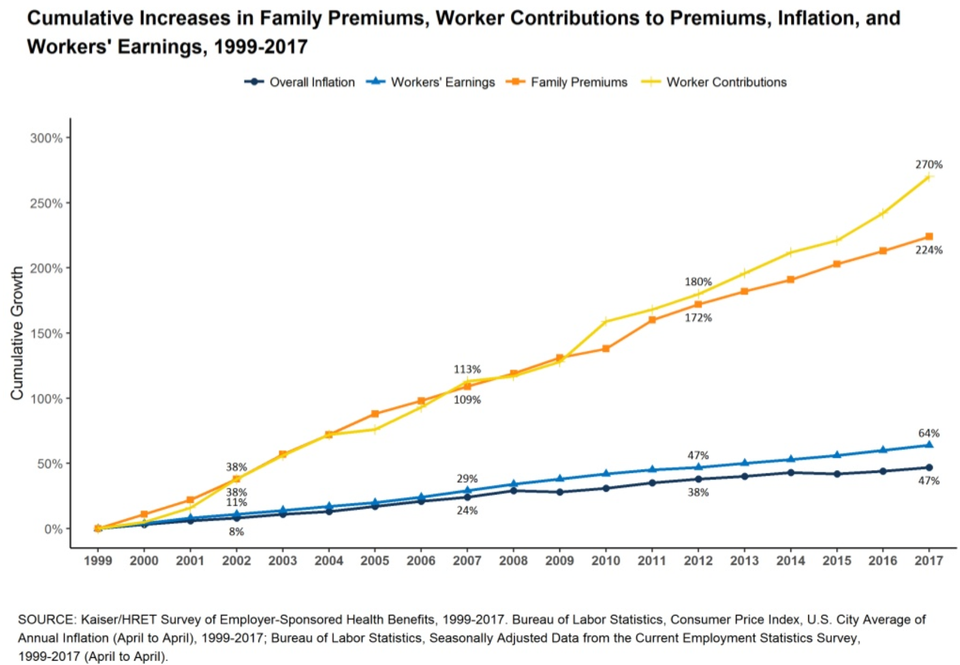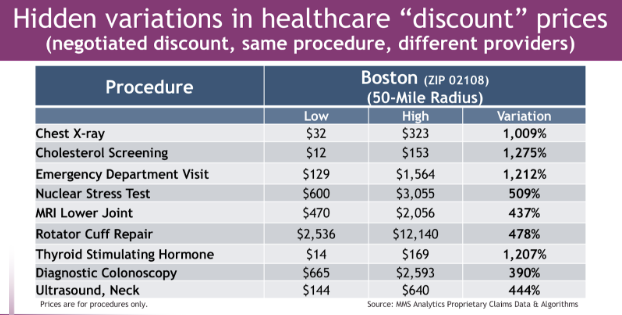How to Solve the 'Last Mile Problem'
Today's customers are accustomed to instant everything, and the outdated paper check payment model is a gut-punch in a time of a need.

Today's customers are accustomed to instant everything, and the outdated paper check payment model is a gut-punch in a time of a need.

Get Involved
Our authors are what set Insurance Thought Leadership apart.
|
Partner with us
We’d love to talk to you about how we can improve your marketing ROI.
|

Drew Edwards is the chief executive officer of Ingo Money, a company he founded in 2001, which has become a leading provider of moving money instantly for businesses and consumers.
Discounts don't build loyalty. But remember Maya Angelou’s famous quote: “People will never forget how you made them feel.”

“People will forget what you said, people will forget what you did, but people will never forget how you made them feel.”That’s why discounts don’t lead to loyalty. Sure, it’s sweet to get a $150 bonus for staying with your current life insurance provider, but once the money hits the bank account it just dissolves into the family budget, never to be seen again. It’s not memorable, and it sure as heck doesn’t make the recipient feel much of anything. Contrast that with what you could actually DO with $150: What if you gave your customers an experience such as a kayaking tour or a candle light dinner for two? The cost would still be some $150, which is close to what a bonus or discount would amount to — but the effect is far stronger. Why? Because the customer associates the experience with you. In the back of their minds, they know, as they’re tucking into their entree or dipping their oar into the turquoise waters, that this experience comes courtesy of Insurance Co. And that association works on a subconscious basis and lasts far longer than any discount could. You may argue: Why wouldn’t customers be able to do it themselves with the $150 check they received from you? After all, they just received a discount of $150, so you might as well encourage them to spend it on that kayak tour, right? All without going through the hassle of organizing it on your end. Not really. Most people don’t operate that rationally, and hardly anyone would take a windfall gain and spend it on something specific. It’s more restrictive to give them $150 in kayak or dinner vouchers, but that restriction means that they are far more likely to use it. And you WANT them to use it. See also: What Really Matters in Customer Experience The effect is obviously not limited to dinner experiences, although that one is quite the front runner when it comes to a memorable experience at an affordable price. Other perks that suit an insurance company’s first-year-itch-avoidance budget would be:
Get Involved
Our authors are what set Insurance Thought Leadership apart.
|
Partner with us
We’d love to talk to you about how we can improve your marketing ROI.
|

William Roberts is the co-founder and director of marketing and product at Loyalty Bay, a pioneer in subscription customer retention solutions.
With the right tools and processes, a few individuals working within well-chosen constraints can produce breakthrough innovations.

Get Involved
Our authors are what set Insurance Thought Leadership apart.
|
Partner with us
We’d love to talk to you about how we can improve your marketing ROI.
|

Marty Agather is a proven thought leader and accomplished writer and speaker on insurance innovation. He blogs frequently on insurance topics. In addition, Agather speaks at insurance industry conferences and events on varied topics.
How much can a single private venture like ABC – however well-funded or staffed – change a fundamentally flawed system design?

 Chart by Dan Munro; Milliman Medical Index 2018[/caption]
Chart by Dan Munro; Milliman Medical Index 2018[/caption]
 Chart by Kaiser/HRET; Kaiser/HRET Survey of Employer-Sponsored Health Benefits[/caption]
Chart by Kaiser/HRET; Kaiser/HRET Survey of Employer-Sponsored Health Benefits[/caption]
The core structure of medicine—how health care is organized and practiced—emerged in an era when doctors could hold all the key information patients needed in their heads and manage everything required themselves. One needed only an ethic of hard work, a prescription pad, a secretary, and a hospital willing to serve as one’s workshop, loaning a bed and nurses for a patient’s convalescence, maybe an operating room with a few basic tools. We were craftsmen. We could set the fracture, spin the blood, plate the cultures, administer the antiserum. The nature of the knowledge lent itself to prizing autonomy, independence, and self-sufficiency among our highest values, and to designing medicine accordingly. But you can’t hold all the information in your head any longer, and you can’t master all the skills. No one person can work up a patient’s back pain, run the immunoassay, do the physical therapy, protocol the MRI, and direct the treatment of the unexpected cancer found growing in the spine. I don’t even know what it means to “protocol” the MRI. — Dr. Atul Gawande – Harvard Medical School Commencement – May, 2011It would be safe to say — without reservation — that I am a real Gawande fan, but the fundamental question remains. How much can a single private venture – however well-funded or staffed – change a fundamentally flawed system design? In effect – to change our whole system of cowboys to pit crews? Until Dr. Gawande can change the tax code, any fiscal benefits of the new ABC venture will be nominal – around the edges of healthcare – and not at the core. What fiscal benefits there are will absolutely accrue to the member companies, but Dr. Gawande is no miracle worker and has no magic wand against the trifecta of accidental system design that keeps pricing spiraling ever upward. That trifecta is actuarial math, ESI and the transient nature of health benefits delivered at scale through literally thousands of employers. Commercial (or private) ventures of every stripe and size can certainly lobby for legislation to change the moral morass of tiered pricing through employers, but they can’t end it.
The bad things [in] the U.S. health care system are that our financing of health care is really a moral morass in the sense that it signals to the doctors that human beings have different values depending on their income status. For example, in New Jersey, the Medicaid program pays a pediatrician $30 to see a poor child on Medicaid. But the same legislators, through their commercial insurance, pay the same pediatrician $100 to $120 to see their child. How do physicians react to it? If you phone around practices in Princeton, Plainsboro, Hamilton – none of them would see Medicaid kids. — Uwe Reinhardt (1937 – 2017) – Economics Professor at the Woodrow Wilson School of Public and International Affairs at PrincetonThis article first appeared at Forbes.com.
Get Involved
Our authors are what set Insurance Thought Leadership apart.
|
Partner with us
We’d love to talk to you about how we can improve your marketing ROI.
|

Dan Munro is a writer and speaker on the topic of healthcare. First appearing in <a href="http://www.forbes.com/sites/danmunro/#594d92fb73f5">Forbes</a> as a contributor in 2012, Munro has written for a wide range of global brands and print publications. His first book – <a href="http://dan-munro.com/"><em>Casino Healthcare</em></a> – was just published, and he is a <a href="https://www.quora.com/profile/Dan-Munro">"Top Writer"</a> (four consecutive years) on the globally popular Q&A site known as Quora.
When we bring play into our day, it can energize us and encourage us to give more of ourselves to tasks.

Get Involved
Our authors are what set Insurance Thought Leadership apart.
|
Partner with us
We’d love to talk to you about how we can improve your marketing ROI.
|

Mike de Waal is senior vice president of sales at Majesco.
Look at Ritz-Carlton. Through a lot of effort, it has created a corporate culture almost solely devoted to serving the customer.

Get Involved
Our authors are what set Insurance Thought Leadership apart.
|
Partner with us
We’d love to talk to you about how we can improve your marketing ROI.
|

William C. Wilson, Jr., CPCU, ARM, AIM, AAM is the founder of Insurance Commentary.com. He retired in December 2016 from the Independent Insurance Agents & Brokers of America, where he served as associate vice president of education and research.
Simplifying life insurance, especially for the new generation of insurance buyers, is crucial for insurers’ future. Insurtech provides the key.

Get Involved
Our authors are what set Insurance Thought Leadership apart.
|
Partner with us
We’d love to talk to you about how we can improve your marketing ROI.
|

Zeynep Stefan is a post-graduate student in Munich studying financial deepening and mentoring startup companies in insurtech, while writing for insurance publications in Turkey.
Why wait for special price transparency regulations before requiring medical suppliers to support a normal shopping experience?

 Many believe there’s no fix without healthcare price legislation, and recently we have seen some regulations passed and additional measures discussed by our political leaders. But Americans already get consumer-based pricing models in nearly every other industry, and shopping comes naturally to most of us.
See also: Is Transparency the Answer in Healthcare?
So why would anyone wait for the passage of special price transparency regulations before requiring their medical suppliers to support a normal shopping experience?
According to the Peterson Center on Healthcare, U.S. residents paid over $352 billion in out-of-pocket healthcare costs—along with another $3 trillion in healthcare premiums and taxes—to pay for commercial and government healthcare programs last year. This represents a staggering 10x, or 1,000% more than, what parents paid when baby boomers were teenagers. Unlike in the mid-‘70s, most medical tests and procedures vary in cost by 5–10x within a short distance of home, but very few of us recognize this. When we consider we’re just as likely to get the best care at the lowest-cost facility, you might think that we’d all take a personal interest in how we choose the providers and locations we use to receive “shoppable” medical tests and procedures. Yet most of us don’t.
The reason is that the continuing rhetoric among suppliers, legislators and payers—created by the combination of the quasi-regulated environment of healthcare with a third-party, indirect, payer system—interferes with normal market dynamics.
Most legislation aiming to mandate some sort of price transparency has simply provided plausible excuses for the industry to say “we use industry best practices” and “we complied.” This provides cover so the industry isn't subjected to the same consumer protection laws that affect goods and services in every other market. What’s actually needed is less regulatory meddling and more free market principles to reward innovations that lead to higher-quality care at lower costs.
Many believe there’s no fix without healthcare price legislation, and recently we have seen some regulations passed and additional measures discussed by our political leaders. But Americans already get consumer-based pricing models in nearly every other industry, and shopping comes naturally to most of us.
See also: Is Transparency the Answer in Healthcare?
So why would anyone wait for the passage of special price transparency regulations before requiring their medical suppliers to support a normal shopping experience?
According to the Peterson Center on Healthcare, U.S. residents paid over $352 billion in out-of-pocket healthcare costs—along with another $3 trillion in healthcare premiums and taxes—to pay for commercial and government healthcare programs last year. This represents a staggering 10x, or 1,000% more than, what parents paid when baby boomers were teenagers. Unlike in the mid-‘70s, most medical tests and procedures vary in cost by 5–10x within a short distance of home, but very few of us recognize this. When we consider we’re just as likely to get the best care at the lowest-cost facility, you might think that we’d all take a personal interest in how we choose the providers and locations we use to receive “shoppable” medical tests and procedures. Yet most of us don’t.
The reason is that the continuing rhetoric among suppliers, legislators and payers—created by the combination of the quasi-regulated environment of healthcare with a third-party, indirect, payer system—interferes with normal market dynamics.
Most legislation aiming to mandate some sort of price transparency has simply provided plausible excuses for the industry to say “we use industry best practices” and “we complied.” This provides cover so the industry isn't subjected to the same consumer protection laws that affect goods and services in every other market. What’s actually needed is less regulatory meddling and more free market principles to reward innovations that lead to higher-quality care at lower costs.
 Rhetoric around “personal mandates,” “lifetime caps,” “pre-existing conditions,” “market stabilization,” “Cadillac tax” and other things that relate only to who will pay for healthcare coverage create a smokescreen that ensures that we never talk about the most basic issue in delivering services to this mass-market – price of medical procedures.
Unfortunately, severe unintended consequences were created when many of our state legislators created a set of rules known as Medical Loss Ratio (MLR) rules, and, more recently, these rules have been codified in federal law known as the 80/20 rule. The intended effect was to limit the amount a healthcare carrier could charge a customer in insurance premiums to no more than the actual medical charges plus a fixed percentage to operate the business and provide a reasonable return to shareholders. This type of rule or contract is often referred to as “cost plus.”
The unintended consequence is that carriers have no incentive to reduce medical claims, and therefore premiums and out-of-pocket expenses. Regardless of the carrier’s wish to help you, as long as there are MLR rules (a.k.a. 80/20, "cost plus"), carriers have a financial disincentive that makes them likely unable to survive if the amount of spending on medical procedures and drugs dropped substantially.
Because research has shown that medical price transparency alone (shopping) could knock more than 50% out of healthcare expense, you can see why some might want to slow the movement to consumerism by continuing to maintain secrecy on procedure prices, while beating the drums of healthcare rhetoric. This approach will keep us ignorant of the root cause of the outrageous cost of care in the U.S. – overpaying for medical procedures.
See also: The Search For True Healthcare Transparency
The good news is that more and more individuals have high-deductible health insurance plans, with roughly 36% of all people under the age of 65 currently enrolled in an HDHP. Now there’s a grassroots movement, debunking lies and empowering patients and employers—not lobbyists—to take action.
Intuitive decision support tools continue to be adopted by those who want to be able to compare their options for healthcare based on price, in addition to quality and convenience. Eventually, as price-elasticity is restored to our broken healthcare market, we will see a full reversal of the unsustainable cost trends we’ve experienced over the last decade.
Rhetoric around “personal mandates,” “lifetime caps,” “pre-existing conditions,” “market stabilization,” “Cadillac tax” and other things that relate only to who will pay for healthcare coverage create a smokescreen that ensures that we never talk about the most basic issue in delivering services to this mass-market – price of medical procedures.
Unfortunately, severe unintended consequences were created when many of our state legislators created a set of rules known as Medical Loss Ratio (MLR) rules, and, more recently, these rules have been codified in federal law known as the 80/20 rule. The intended effect was to limit the amount a healthcare carrier could charge a customer in insurance premiums to no more than the actual medical charges plus a fixed percentage to operate the business and provide a reasonable return to shareholders. This type of rule or contract is often referred to as “cost plus.”
The unintended consequence is that carriers have no incentive to reduce medical claims, and therefore premiums and out-of-pocket expenses. Regardless of the carrier’s wish to help you, as long as there are MLR rules (a.k.a. 80/20, "cost plus"), carriers have a financial disincentive that makes them likely unable to survive if the amount of spending on medical procedures and drugs dropped substantially.
Because research has shown that medical price transparency alone (shopping) could knock more than 50% out of healthcare expense, you can see why some might want to slow the movement to consumerism by continuing to maintain secrecy on procedure prices, while beating the drums of healthcare rhetoric. This approach will keep us ignorant of the root cause of the outrageous cost of care in the U.S. – overpaying for medical procedures.
See also: The Search For True Healthcare Transparency
The good news is that more and more individuals have high-deductible health insurance plans, with roughly 36% of all people under the age of 65 currently enrolled in an HDHP. Now there’s a grassroots movement, debunking lies and empowering patients and employers—not lobbyists—to take action.
Intuitive decision support tools continue to be adopted by those who want to be able to compare their options for healthcare based on price, in addition to quality and convenience. Eventually, as price-elasticity is restored to our broken healthcare market, we will see a full reversal of the unsustainable cost trends we’ve experienced over the last decade.
Get Involved
Our authors are what set Insurance Thought Leadership apart.
|
Partner with us
We’d love to talk to you about how we can improve your marketing ROI.
|

Mark Galvin is CEO of MyMedicalShopper. He has played key roles in 14 New England startups. Although his start was as a software engineer, eight of those companies he founded and operated as president and CEO.
Only 27% of executives felt that their key performance indicators (KPIs) drove their businesses toward their strategic goals—leaving a lot of room for improvement.

Peter Drucker famously said that we can't manage what we can't measure. Now that so many of us are trying to innovate in a predictable and sustainable (in other words, manageable) way, what should we measure? What metrics will let us know whether we're on the right path, while there's still time to pick a different one?
Some smart people weighed in on the topic recently, and I'll summarize them here.
Michael Schrage and David Kiron published a study in MIT's Sloan Management Review that found that only 27% of executives felt that their key performance indicators (KPIs) drove their businesses toward their strategic goals—leaving a lot of room for improvement. The two said many KPIs, having been used for decades, are out of date in today's environment. The authors also said too many are like profitability and market share, which tell you if you met targets in the past but don't help you understand the future.
They suggested a heavy dose of machine learning, sifting through big data, to identify new KPIs that will really move the needle for a business. They speculated that Netflix had no idea that binge watching would become such a phenomenon but quickly spotted the trend and came up with ways to measure bingeing, which led to KPIs that drove efforts to continually make Netflix more addictive.
Here is an interview with my old friend Michael, with a link to the full report.
Amy Radin also weighed in, in this article at ITL, based on her long experience leading innovation efforts at major corporations and on the work she did for her book, "The Change Maker's Playbook," coming out in September. (I'm such a fan, I wrote the Foreword.)
She notes that traditional financial planning can smother innovation efforts. How can an innovator be expected to produce the precise forecasts that you can insist on from someone running an existing business in a well-understood market? Why would you even ask for such a forecast, given that it provides the corporate antibodies—those that like the world just the way it is—a chance to discredit an innovative effort?
Instead, Amy suggests five questions, including:
In a cynical moment, my frequent co-author Chunka Mui and I once wrote in a book that "marketing is how you lie to your customers; market research is how you lie to yourself." Market research—whatever the reason for its failings—simply can't be as far off as it is now if our innovation efforts are to succeed. Spending a bit of time with Michael's and Amy's work will, I'm confident, help you zero in better on the right questions and the right indicators. You'll measure your innovation work better, and you'll manage it better.
Have a great week.
Paul Carroll
Editor-in-Chief
Get Involved
Our authors are what set Insurance Thought Leadership apart.
|
Partner with us
We’d love to talk to you about how we can improve your marketing ROI.
|

Paul Carroll is the editor-in-chief of Insurance Thought Leadership.
He is also co-author of A Brief History of a Perfect Future: Inventing the Future We Can Proudly Leave Our Kids by 2050 and Billion Dollar Lessons: What You Can Learn From the Most Inexcusable Business Failures of the Last 25 Years and the author of a best-seller on IBM, published in 1993.
Carroll spent 17 years at the Wall Street Journal as an editor and reporter; he was nominated twice for the Pulitzer Prize. He later was a finalist for a National Magazine Award.
Being methodical, teams can achieve a hybrid IT cloud infrastructure that allows for improved operations at manageable costs.

Get Involved
Our authors are what set Insurance Thought Leadership apart.
|
Partner with us
We’d love to talk to you about how we can improve your marketing ROI.
|

Richard Dresden leads a team of sales, consulting, channel and solution architecture professionals who partner with Ensono clients on their IT transformation needs.